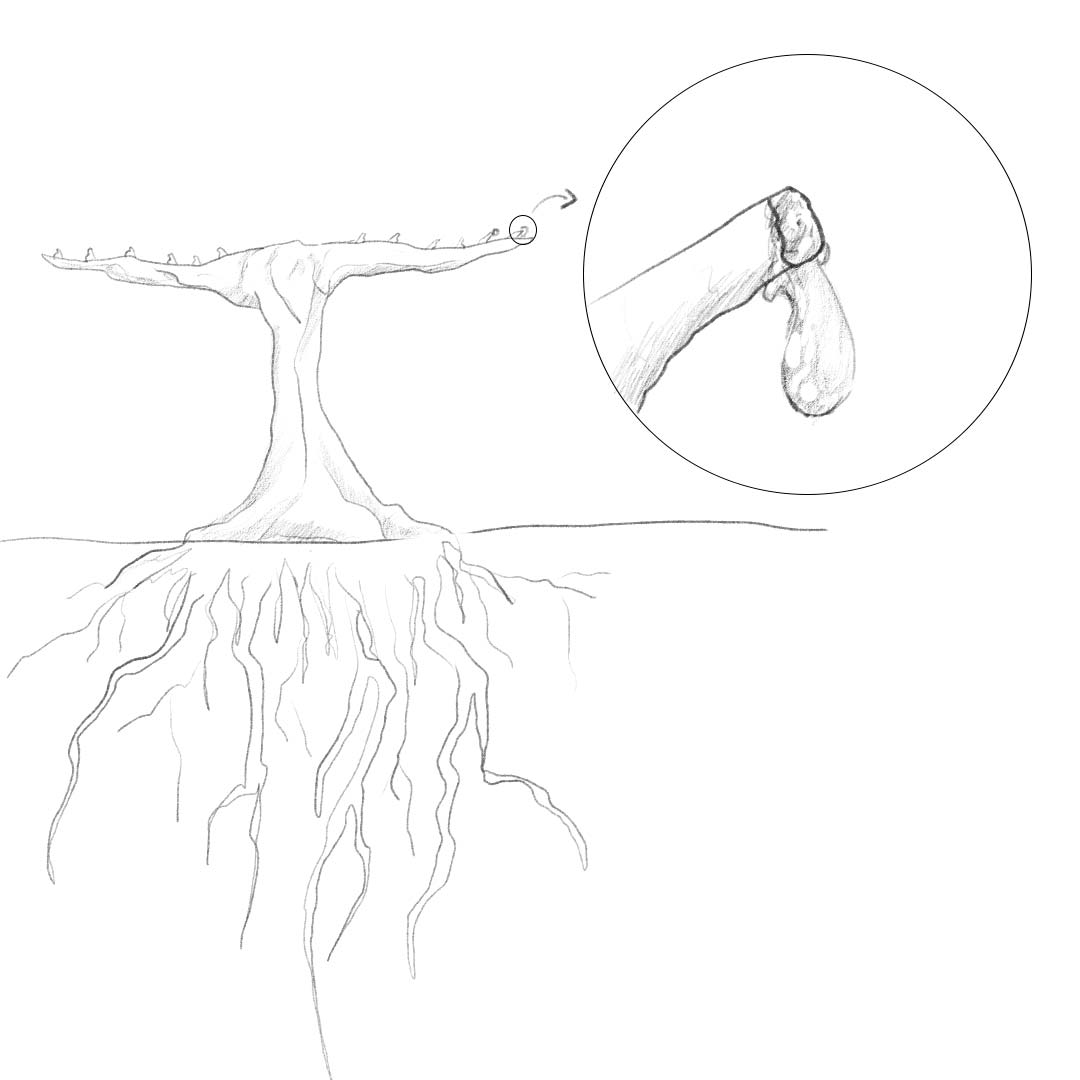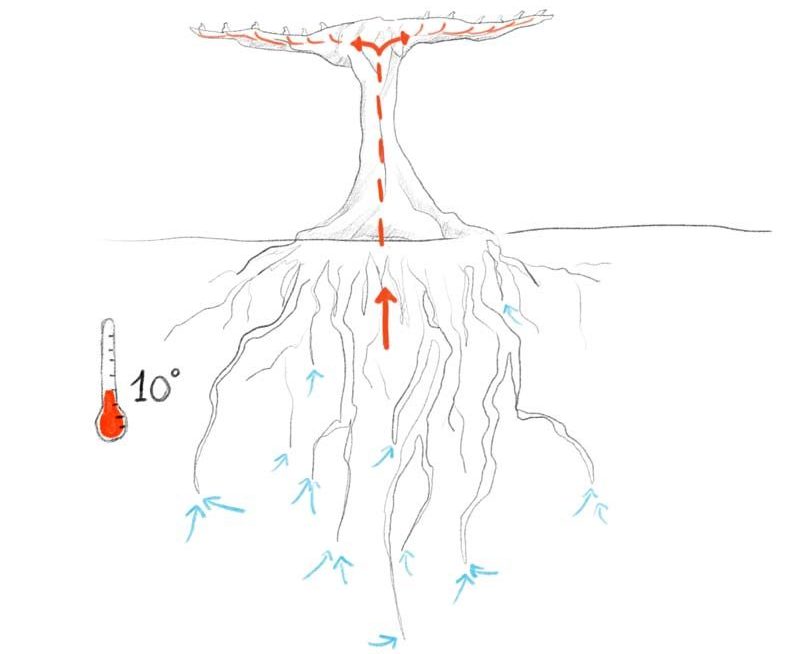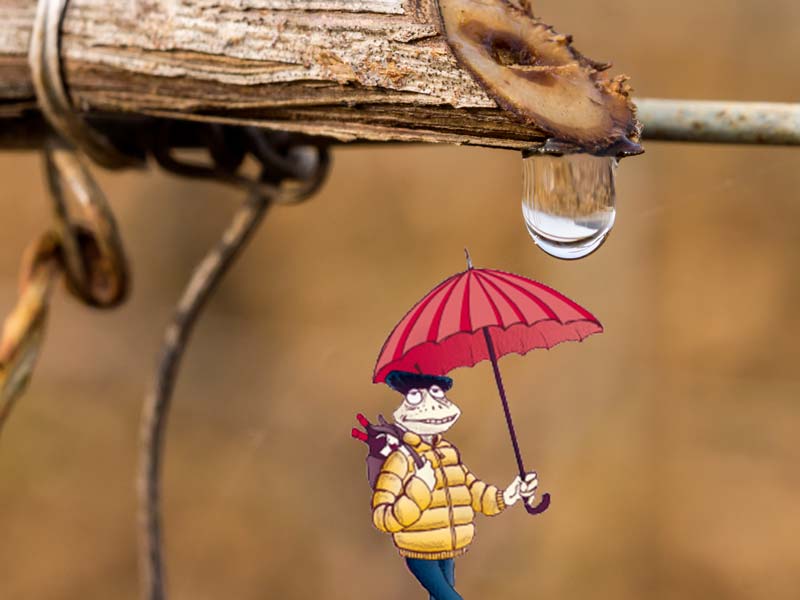Every year, we can observe an incredible phenomenon that we call in France “the cry of the vines”.
We can also use the word “tears”. We say that the vine “is weeping” or that the vine is “crying”. In English, we use the term bleeding.
An event that happens every spring!

Indeed, following a late pruning and the change in temperature, the sap rises in the shoots and flows in droplets through the freshly opened “wounds” of the pruning, reminding the shape of tears. The quantity of sap varies according to the temperature.
Water, the source of these tears.
This phenomenon appears at the end of winter, when the soil (at a depth of 25cm) reaches the temperature of 10°C. The vine, having 3 levels of roots which can go from 2 to 5 meters (and sometimes much more!) will draw water from the ground. This will naturally stimulate and make the sap go up towards the freshly cut shoots, which will then come out in drops.

Did you know ?
in the past, people who worked in the vineyards used to collect this sap to coat their hands and face with it. They had noticed that it reduced the stains linked to the sun and external aggressions. Nowadays, grapevine sap is used in many cosmetic products, such as moisturizers, toners, and serums, to provide natural nourishment and protection for the skin.
In conclusion, the cry of the vines is not only a beautiful sight to see, but it also produces a valuable natural ingredient that has many benefits for the skin. Whether it’s collected from the vines or used in cosmetic products, grapevine sap is a powerful ally in promoting healthy and radiant skin.
Did you know about this phenomenon?











